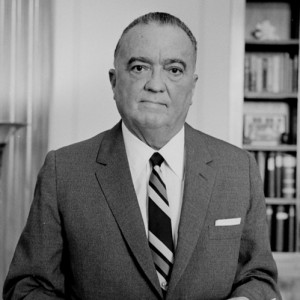05.02
On this date in 1972, after nearly five decades as director of the Federal Bureau of Investigation (FBI), J. Edgar Hoover dies. He leaves the powerful government agency without the administrator who had been largely responsible for its existence and shape. Educated as a lawyer and a librarian, Hoover joined the Department of Justice in 1917 and within two years had become special assistant to Attorney General A. Mitchell Palmer. Deeply anti-radical in his ideology, Hoover came to the forefront of federal law enforcement during the so-called “Red Scare” of 1919 to 1920. The former librarian set up a card index system listing every radical leader, organization, and publication in the United States and by 1921 had amassed some 450,000 files. More than 10,000 suspected communists were also arrested during this period, but the vast majority of these people were briefly questioned and then released. Although the attorney general was criticized for abusing his authority during the so-called “Palmer Raids,” Hoover emerged unscathed, and on May 10, 1924, he was appointed acting director of the Bureau of Investigation, a branch of the Justice Department established in 1909.
During the 1920s with Congress’ approval, Director Hoover drastically restructured and expanded the Bureau of Investigation. He built the corruption-ridden agency into an efficient crime-fighting machine, establishing a centralized fingerprint file, a crime laboratory, and a training school for agents. In the 1930s the Bureau of Investigation launched a dramatic battle against the epidemic of organized crime brought on by Prohibition. Notorious gangsters such as George “Machine Gun” Kelly and John Dillinger met their ends looking down the barrels of Bureau-issued guns, while others, like Louis “Lepke” Buchalter, the elusive head of Murder, Incorporated, were successfully investigated and prosecuted by Hoover’s “G-men.” Hoover, who had a keen eye for public relations, participated in a number of these widely publicized arrests, and the Federal Bureau of Investigations, as it was known after 1935, became highly regarded by Congress and the American public.
With the outbreak of World War II, Hoover revived the anti-espionage techniques he had developed during the first Red Scare, and domestic wiretaps and other electronic surveillance expanded dramatically. After World War II, Hoover focused on the threat of radical, especially communist, subversion. The FBI compiled files on millions of Americans suspected of dissident activity, and Hoover worked closely with the House Un-American Activities Committee (HUAC) and Senator Joseph McCarthy, the architect of America’s second Red Scare. In 1956, Hoover initiated Cointelpro, a secret counterintelligence program that initially targeted the U.S. Communist Party but later was expanded to infiltrate and disrupt any radical organization in America. During the 1960s the immense resources of Cointelpro were used against dangerous groups such as the Ku Klux Klan, but also against African American Civil Rights organizations and liberal anti-war organizations. One figure especially targeted was civil rights leader Martin Luther King Jr., who endured systematic harassment from the FBI.
By the time Hoover entered service under his eighth president in 1969, the media, the public, and Congress had grown suspicious that the FBI might be abusing its authority. For the first time in his bureaucratic career, Hoover endured widespread criticism, and Congress responded by passing laws requiring Senate confirmation of future FBI directors and limiting their tenure to 10 years. On May 2, 1972, with the Watergate affair about to explode onto the national stage, J. Edgar Hoover died of heart disease at the age of 77. The Watergate affair subsequently revealed that the FBI had illegally protected President Richard Nixon from investigation, and the agency was thoroughly investigated by Congress. Revelations of the FBI’s abuses of power and unconstitutional surveillance motivated Congress and the media to become more vigilant in future monitoring of the FBI.












